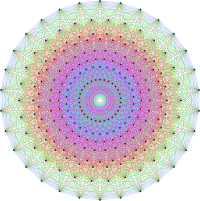Lie algebra representation

Imagine you have a bunch of toys in a toy box. They all have different shapes and sizes, but they all belong to the same group of toys. Now, you can represent this group of toys in many different ways - you can sort them by color, by size, or by shape.
Similarly, a Lie algebra is a group of mathematical objects that are related to each other. These objects can be represented in many different ways, and we call these representations.
Think of the Lie algebra like a toy box full of toys, and the representation is the way we choose to sort or organize the toys. Depending on how we sort them, the toys might have different properties or characteristics.
For example, imagine we have a group of toy cars. We can represent them by sorting them into two categories - red cars and blue cars. This is like having two different representations of our Lie algebra - one that sorts its elements into "red" and "blue" categories. In each representation, the cars have slightly different behaviors or properties (like whether they go fast or slow).
In general, different representations of a Lie algebra will have different properties and behaviors that help us study and understand the original group. So, just like sorting toys helps us learn more about them, using different representations of a Lie algebra helps us learn more about its properties and how it behaves.
Similarly, a Lie algebra is a group of mathematical objects that are related to each other. These objects can be represented in many different ways, and we call these representations.
Think of the Lie algebra like a toy box full of toys, and the representation is the way we choose to sort or organize the toys. Depending on how we sort them, the toys might have different properties or characteristics.
For example, imagine we have a group of toy cars. We can represent them by sorting them into two categories - red cars and blue cars. This is like having two different representations of our Lie algebra - one that sorts its elements into "red" and "blue" categories. In each representation, the cars have slightly different behaviors or properties (like whether they go fast or slow).
In general, different representations of a Lie algebra will have different properties and behaviors that help us study and understand the original group. So, just like sorting toys helps us learn more about them, using different representations of a Lie algebra helps us learn more about its properties and how it behaves.
Related topics others have asked about:
